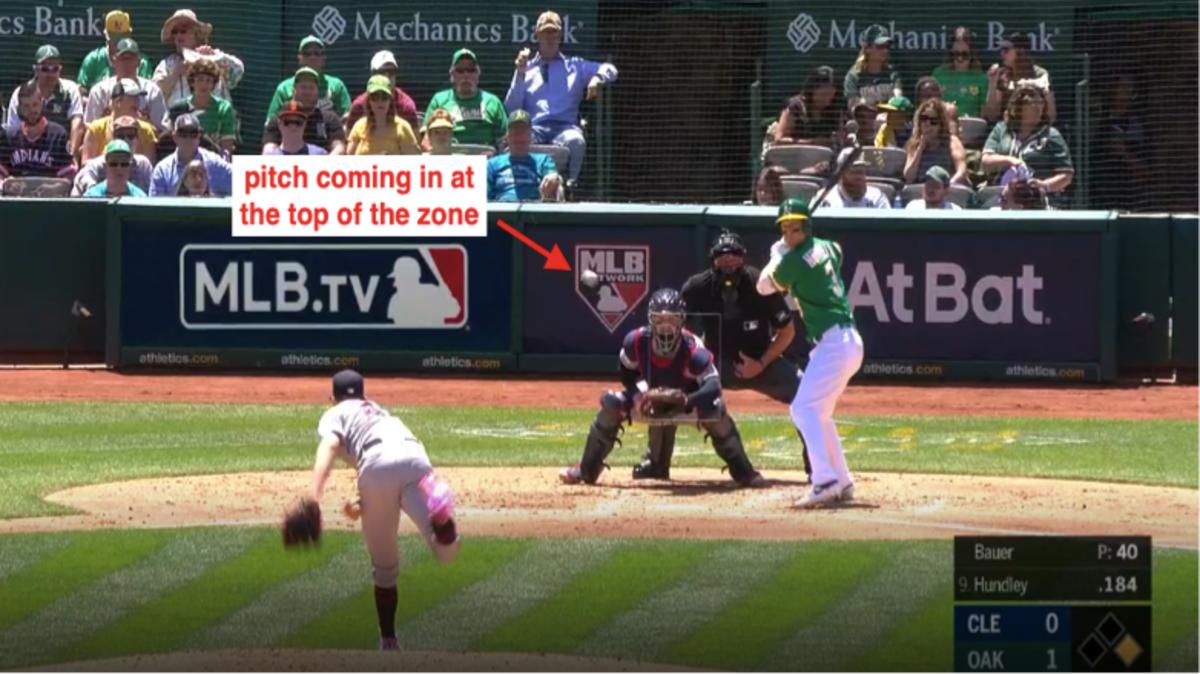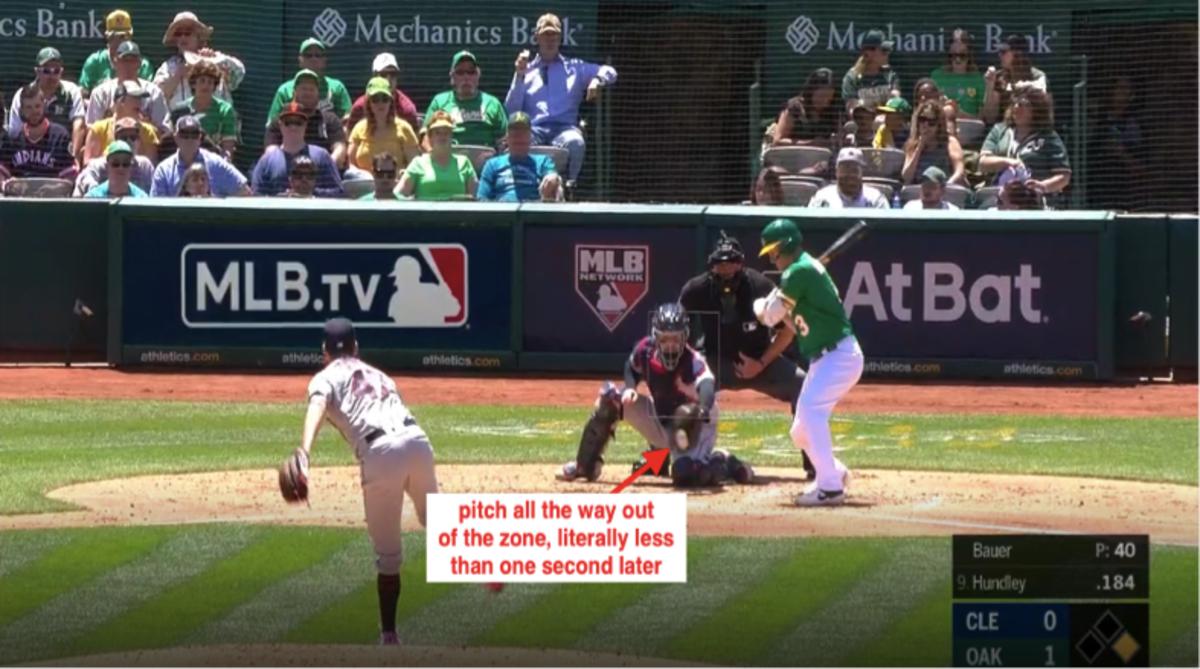Who Throws the Nastiest Breaking Ball in MLB?

As we wrote in our previous installment of baseball’s nastiest pitches, nasty comes in many forms. There is no one absolute measure of filth. Any quest to identify the single most devastating pitch in the game is going to come up short, because, well—how do you compare the heat of a 102 mph fastball with the beauty of a 12-6 curve? There’s no conversion factor to apply. For this series, then, we’re breaking things down by pitch category, and we’re surveying multiple types of nastiness within each one.
Last time, it was fastballs. Now, we’re on to breaking balls—for these purposes, just sliders and curves, including knuckle curves. How many ways can a breaking ball be nasty, statistically and aesthetically and otherwise? Let us count the ways…
The Curve With the Biggest Drop
For the first one, we’ll go with the most obvious—the curveball with the deepest curve. It’s a wonder of geometry, equal parts dazzling and deadly. It takes only a fraction of a second to twist its path dramatically in an act that can be described as “good depth” or “theft of the soul.” And statistically, there’s one clear winner here. Trevor Bauer’s curveball drops a full nine inches more than the average pitch, as measured by Baseball Savant, 17% more than the typical curve with similar velocity. (His lead here is comfortable: Atlanta’s Sean Newcomb is the runner-up down at 15%.) As it sounds, this is a lot of depth for a pitch:
Trevor Bauer, Filthy 80mph Knuckle Curve/Pitching with Emotion (10th K). 😷 pic.twitter.com/QFP1Dg77ZF
— Rob Friedman (@PitchingNinja) May 12, 2019
And yet it might be even better appreciated in still frames, which makes the drop look even more stomach-churning:


The Slider With the Hardest Break
What about the other key type of break for a breaking ball, though? Turn your attention to the slider, where the king (break-wise, at least) is Jordan Hicks. It might seem a little unfair, given that Hicks, you know, already throws harder than any pitcher in the game and has all the glory that comes from emitting baseball’s closest equivalent to a steady stream of pure flames. When he’s not hitting triple-digits, though, he’s using his slider, and it breaks more than any other one in the game. Fully twice as much as the average slider, to be exact. (Okay, it’s 201%, not 200%, to be really exact, but when you’re this far in front of everyone else, who’s keeping track?)
Jordan Hicks, Wicked 86mph Slider....Ramirez bends the knee. 👑 pic.twitter.com/LbLNeXMs3C
— Rob Friedman (@PitchingNinja) June 11, 2019
The Hardest Slider, Period
There’s a different type of nasty in the game’s hardest slider, though, rather than the slider with the hardest break. This one goes to Jacob deGrom, who’s averaged 93 mph with the pitch this year—throwing it harder than he ever has, taking the honor of the game’s fastest slider over from teammate Noah Syndergaard, who’d held it for the past two seasons. It’s almost indistinguishable from a cutter, because it’s just that hard, but the movement is undeniably slider, and the result might as well be unhittable.
Beautiful depth on this 91mph slider from Jacob deGrom. pic.twitter.com/RDDD5WTUv2
— Nick Pollack (@PitcherList) March 28, 2019
The One With the Highest Spin Rate
Ryan Pressly’s curveball doesn’t need any statistical context to be beautiful. The drop isn’t extreme, but it’s wonderfully clear, and any additional visual info you might need is in how deeply the pitch embarrasses hitters. (More than 40% of swings are misses.) To appreciate Pressly’s curve, you don’t need anything else. To fully understand it, though, you need to grasp how much it spins. Its spin rate is higher than any other curveball in the game—3,294 revolutions per minute—which is both the secret to its success and a new frontier in hitters’ devastation.
Ryan Pressly, Soul-Stealing 84mph Curveball. 😱👻 pic.twitter.com/QYW6bJzx1R
— Rob Friedman (@PitchingNinja) June 2, 2019
The One With the Highest Whiff Rate
So far, we’ve looked at these pitches in a vacuum—judging them just on why they move, or how they move, or how fast they move. This is only framework of nastiness, though, and there’s an entirely different one to be found in pitches’ results. One can easily make a case that “nasty” is a matter of what it does to the hitter, rather than how it comes from the pitcher… which brings us to the breaking balls with the highest whiff rates. For curveballs, it’s Blake Snell, with 56% of swings ending up as misses—
Blake Snell, Filthy 82mph Curveball. 😨🦖 pic.twitter.com/8fDmZFCN2j
— Rob Friedman (@PitchingNinja) March 11, 2019
—and for sliders, it’s Corbin Burnes, who’s struggled this year with making it through innings but has still recorded plenty of strikeouts (13 K/9), owing in large part to this pitch, with a whiff rate of 62%:
Corbin Burnes, Filthy 90mph Slider. 😨 pic.twitter.com/626iTF2N5g
— Rob Friedman (@PitchingNinja) April 17, 2019
The One That’s Crazy Slow
What about the pitch that’s the most unsettling? The one that does the most to disrupt a hitter’s expectations of what he should see from a major league mound? That would be Zack Greinke’s low-60s curve, an eephus-y delight that’s consistently the slowest pitch in the game right now. You could call it a junkball, but the low velo doesn’t feel like junk so much as it does space-bending wizardry.
PitchingNinja Guilty Pleasure:
— Rob Friedman (@PitchingNinja) June 8, 2019
Watching hitters swing at Greinke's Slow Curveball. 😂 pic.twitter.com/p4TBkBINU0
The Intangibles
And then there are some that don’t top any leaderboard right now, paying testament to the idea that nasty is felt, rather than calculated. Like Charlie Morton’s curve…
Charlie Morton has a career-high K% and career-high curveball usage this season. Probably not a coincidence... pic.twitter.com/eFC488BVZX
— Nick Pollack (@PitcherList) May 3, 2019
…or Chris Sale’s slider…
Sale's slider is all the way back to "spinning you around in a circle" quality pic.twitter.com/E34I9zlfuI
— Nick Pollack (@PitcherList) June 6, 2019
…or, c’mon, you knew this one had to be here.
Clayton Kershaw, Pretty 73mph Curveball. 🤩 pic.twitter.com/uPzxaZMW1L
— Rob Friedman (@PitchingNinja) May 4, 2019
